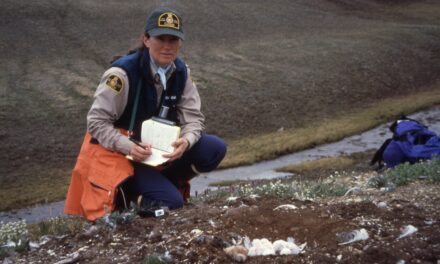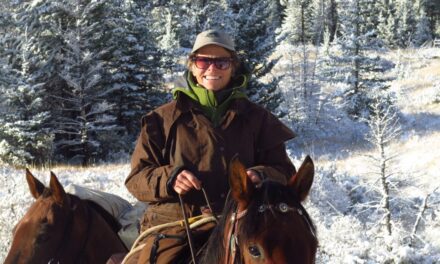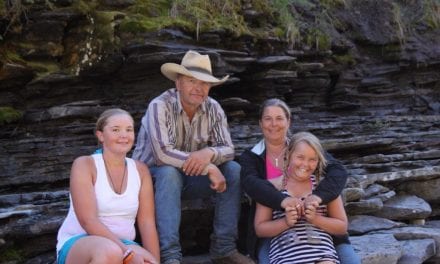Thank you to the Whyte Museum of the Canadian Rockies for granting permission to the Park Warden Service Alumni to post this interview on our website.
This Oral History interview was funded in part by a research grant received in 2019 from the Government of Alberta through the Alberta Historical Resources Foundation.
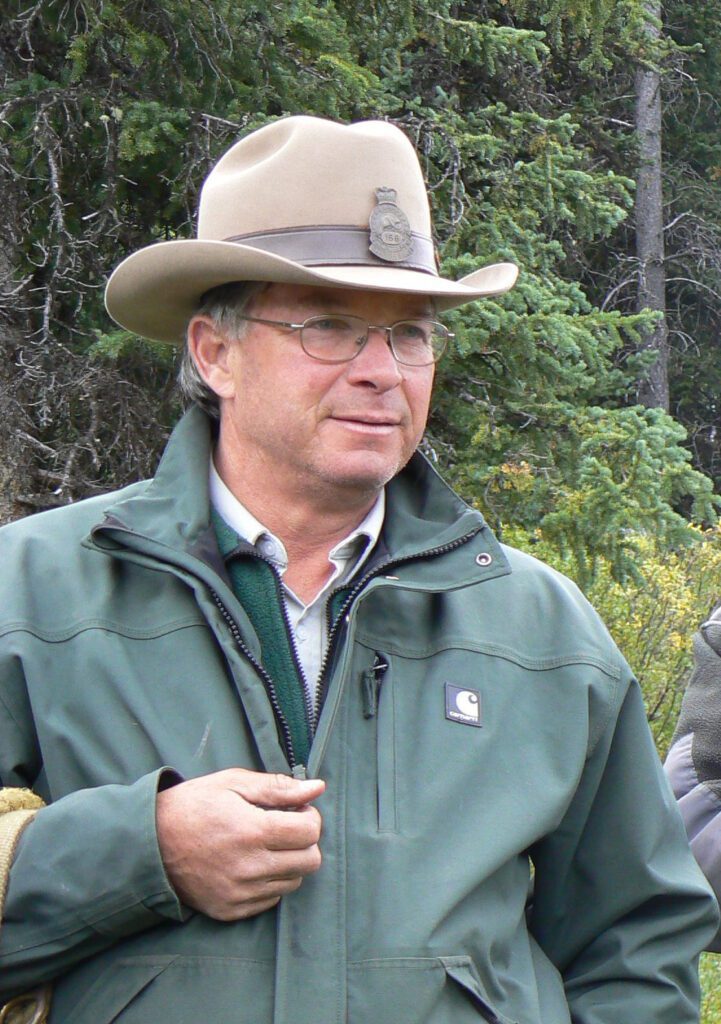
Park Warden Alumni Society of Alberta Oral History Project Summer 2019
In Person Interview with Dave Norcross
September 6, 2019 – 10:00 am, Invermere, BC.
Interviewed by Susan Hairsine
Part one: Tape 10:22 am
Place and date of birth?
Dave was born in 1949 in Osoyoos, British Columbia.
Where did you grow up?
In Osoyoos, that’s where I went to school. I finished school there and did a number of different jobs; ski hills, sawmills, worked in the bush logging and then had some summer jobs,. I worked for BC Forest Service, fire crew out of Penticton, Fish and Wildlife out of Penticton doing range rehab work for California Bighorn Sheep out of Vaseaux Lake. We did some range rehab work out of the Ashonola country out of Keromeos, the alpine for deer, a lot of work up there. And then I’d gone to University for a year, Notre Dame in Nelson, after high school. I didn’t learn much there, but it was good. It’s funny how things work out, because I didn’t learn much book wise, but met a lot of good friends, surprisingly two of them that are here this weekend that I still keep in touch with. I worked on my skiing quite a bit that winter, a lot actually. There were two twins from Jackson Hole Wyoming that had wheels, so we’d throw them a buck for gas and spent a lot of time at Red Mountain. Anyway, skiing improved quite a bit there. So, it wasn’t all loss because it turned out later on in my life, skiing became a big part of it; part of the job, part of work so can’t write it off as a lost winter. (End section 1 Tape 03:00)
Section 2 – 10: 27 am
Dave: One of the people that I met that winter was from Pincher Creek. He’s still a close friend. We both did our skiing in Rossland and a few years after that, I was skiing at Apex and hurt my leg. I was working in the sawmill at the time. After a couple of weeks of hobbling around I got cabin fever and I decided to go visit my friend Jim in Pincher Creek. So I went and visited him and he was going to Lethbridge Community College. So I went to visit him in Lethbridge and he showed me around the college and he said “This is a pretty interesting place and an interesting course. If you ever decide to go back to school you should really think about this”. So I did and that fall I enrolled and the next thing you know I was in Lethbridge. And that all came about from ski bumming and a bummed up knee. Two years later, there I was. So, I went through the Lethbridge course and I really didn’t know much about national parks or the Warden Service. The only contact with wardens was a field trip down to Waterton and we met Brian MacDonald down there, a warden. He was the only warden I’d ever laid eyes on at that point. Anyway, in the final year there was applications for a competition for parks. Ric Ralf was there at the same time. We put in applications and I think there were about 1200 applications and about six jobs, typical at that time. So I put mine in and got an interview, which I was happy about. Anyway, on my way home I stopped in at Wasa Lake in the East Kootenays and talked to Chris Saddler, the Backcountry Manager for BC Parks at the time. I talked to him and he offered me a job at Elk Lakes Provincial Park for summer. And he said, “I need an answer in two weeks”. I had told him I had an interview with national parks. I went home, and I thought about it, and it was kind of a bird in the hand is better than unknown, so I decided to take it. So I phoned regional office and said, “I can’t do your interview because I’ve already accepted another job.” Jim Sime said “Come for an interview anyways. We’re doing them in Penticton so come up there and have the interview.” So I said, “I’ll do it but just understand that I can’t take the job, but I’ve already committed to somebody else”.
So I went to the interview; Max Winkler was there, Jim Sime and I forget the other fellow. Had the interview and a couple of weeks later after that they phoned me up and said, “We’d like to offer you in Pacific Rim”.
SH: Really
Dave: Yes, and I said, “Well I’m sorry but I told you before the interview that I’d committed and I can’t go back on my word so I’ve got to turn you down.” So I did. And I went off to Wasa to start my job in the spring. I told my boss there what had happened and he said, “You’re a fool, you should have gone.” (Tape 4:14)
Dave: So I said, “Okay, but you wanted a commitment so here I am. He said, “Yes, but jobs in national parks don’t come up very often. You should have jumped at it. “
So that was one of life’s lessons, right off the bat. Ric Ralf ended up going to Pacific Rim in the spot I had turned down. I worked for Chris in Elk Lakes and I really enjoyed it, and in that summer, I worked with Gerry Israelson in Elk Lakes. It was the first time I met Gerry. He was only I think 18 at the time, no he must have been 20. So Gerry was there, and we had a good summer together. He introduced me to climbing a little bit. We climbed a few peaks around there. That was all new to me. The next summer, and that winter I skied and ski patrolled at home.
SH: Apex?
Dave: Yes and then the next summer I went back. National Parks had an eligibility list that was still active so they didn’t have a competition that year. So, okay no competition. So went back and spent another year at Elk Lakes. I met Al McDonald that summer, he was up at Assiniboine, Al and Bernadette. And the next year they had a competition again and I re-applied, and I got on an eligibility list. But that winter before that, I ski patrolled at Whitewater. It was the second year that Whitewater was open – 75/76. At the end of February, I got a call from Elk Island and they wanted somebody for three months to help with elk trapping. So off to Elk Island I went. So that was my very first job with Parks …. Elk Island. (Tape 06:54)
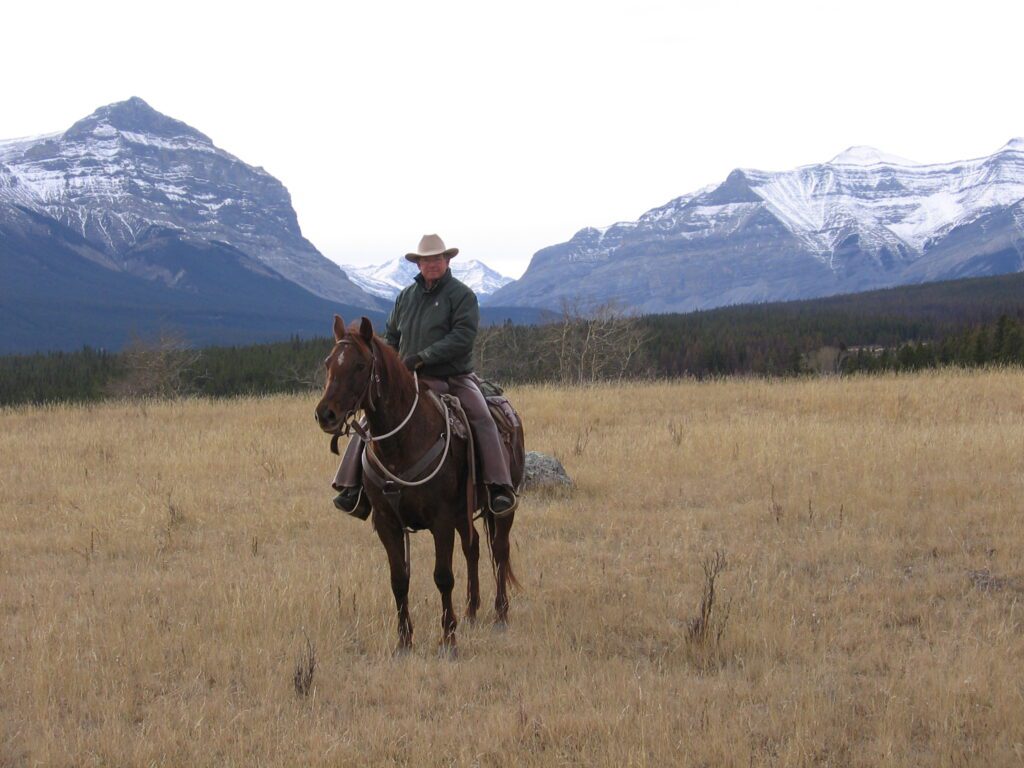
Dave at the Ya Ha Tinda Ranch. Photo contributed by T. Damm.
Dave: That was an interesting deal … Elk Island in the winter is not the most appealing place. Especially if you like skiing and the mountain environment. It’s quite different but interesting. The wildlife work was certainly interesting, certainly a lot of hands-on work with elk and bison. Survey work, aerial surveys, counts, so interesting from that aspect. They had an interesting Chief at the time; Bob Jones. I didn’t know much about how Parks worked, the Warden Service. Anyway, I came back after lunch one day, one o’clock, to the office and all the women in the office were in a big flap. I found out what was going on. It turns out Bob Jones used to eat his lunch in his office. He was looking out the window one day and there was a feral house cat that ran across the front lawn. Jones decided the cat needed to go, and without telling anybody, he opened the back door to the office using the door jamb as a prop. He aimed at that cat with his 30:06 and blew it to smithereens. So, the sound of the 30:06 instantly echoed completely through the office and the cat vaporized. That certainly had the office staff chattering for the afternoon. Anyway, that was Jones, that was just par for the course, and his style. That was an interesting deal. One of the most memorable persons I met there was Fred Dixon. Fred was a down to earth guy. He was an old time warden, hands on experience. I learned much more about Fred after I moved to Jasper and Banff and learned his history at the Ya Ha Tinda with the horses. He was clearly a horseman, loved the horses. He was good with all kinds of wildlife. A real level headed, down to earth, common sense guy. I learned quite a bit from him; nice guy.
SH: Gerry talked about him too.
Dave: Ya. I learned a few things about elk, elk trapping there, my first introduction to working around bison. One thing that’s just kind of an aside on the whole Elk Island experience, that was right at the apex of the … I don’t know the proper name for it, but they were hiring natives.
SH: The native trainee program. (Tape 09:52)
Dave: Yes, native trainee program for seasonal wardens. This is my first exposure to it. I was living in a duplex and I had a roommate, Leonard, I forget his last name. He was from Saddle Lake. He was okay, a bit of a pissed off Indian, the white man owes me a job kind of attitude. That floated to the top every once in a while, and not well received by the older guys. I went away somewhere for the weekend and I came back. I knew Leonard was having marital problems, that he had a wife back at the reserve but they weren’t getting along. I came back one weekend, late Sunday night, about 10 o’clock. No Leonard. I opened the door of the duplex and there wasn’t a stick of furniture in it, the fridge and stove were gone, the place was gutted – there was nothing in it. I go upstairs to where my bedroom is and my mattress was on the floor, luckily, I hadn’t left much, clothes and not much more. But the place was completely empty. Anyway, I couldn’t do anything about it Sunday night but about one o’clock I hear the door banging open. It’s Leonard, he’s come back. So I don’t get up but in the morning I get up and go downstairs, and I say “Leonard, do you have any idea what’s going on here?” He said, “Oh it’s my wife”. She sent her brothers to clean me out. And I said “Well, this is a government place. We’re just renting here.” And he said “Ya, they don’t know that”. So they took everything. Anyways, that was Elk Island … Enough of that. (Tape 11:56)
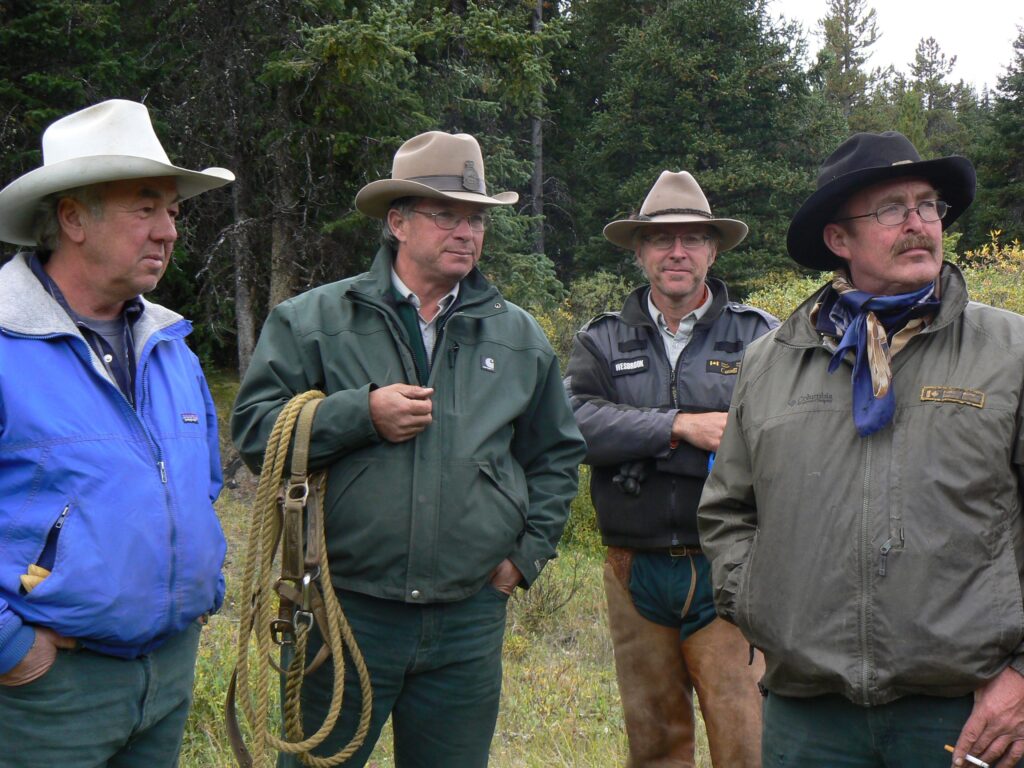
Brian Wallace, Dave, Mike Westbrook and Jim Chesser, 2009 Warden Service Centennial Ride.
SH: So that is my “What national park did you start working in? question. We kind of did how you became involved in the Warden Service. What made you want to join the Warden Service?
Dave: It just evolved. I didn’t know anything about the Warden Service. Nothing. I met Brian MacDonald. The first time I’d seen a warden in uniform was on a field trip from college. I didn’t know anything about the history or what they did. I learned a little bit in Lethbridge. I was taking renewable resources management. There was some talk about what jobs were available for people with that diploma and obviously Parks Canada, Warden Service was one of them. But at that time there was only kind of three branches of Parks Canada. There was the maintenance/operations end of things, there was interpretive services, the naturalists, and then there was the Warden Service. And in those days the wardens did everything else – they did wildlife management, fire, law enforcement, managing trails, public safety – it all fell under the Warden Service. So I heard about it, and heard it hard to get into, which proved to be true. But I knew there were chances for backcountry work, and skiing and that kind of thing. I persevered, and that spring after Elk Island, I got a call from Jasper, and they offered me a term position there. So, I showed up in Jasper, in mid-May. And that’s where my mountain warden experience started.
SH: So I’m going to move that to what parks did you work in. So Jasper …. (Tape 14:15)

Dave, Jim Chesser and Gord Anderson at Scotch Camp, September 2009.
Dave: Yes, so Jasper was May of 1977. Brian Wallace phoned me and told me I had the job. I’d be working for him; my direct supervisor and I’d be working in the backcountry on the north boundary. I hurriedly got a map out and found out where that was, and I showed up and there was two weeks of rudimentary training, introduction; a little bit of law enforcement, a little bit of fire pump, a little bit of horse stuff. And I mean a little bit of horse stuff.
SH: Were you good on horses at that point Dave?
Dave: No, Brian told me we’d be on the north boundary on horseback. He asked me if I had any horse experience. I said, “I barely know which end of the horse to put the pail under.” My experience with horses to that point was working on a fire in the Okanagan. I was working in a sawmill and the IWA went on strike. I came home and was working in Midway. I came Friday, on strike, and came over the hill and looked into the valley at Osoyoos, and it was filled with smoke. I drove by the firehall and BC Forestry was there and hiring right now. I got a job that day. And even before I went home and changed I got a job and started work at six in the morning. I spent the next three weeks fighting fire, on that fire, and after it was all under control, and they just needed to monitor it through the end of August, one of the forest officers there hired myself and another fellow to patrol it on horseback.
The other fellow had his own horse and for me they rented a horse from one of the local horse guys that I knew quite well. He rented Forestry his best horse, apparently. His best horse didn’t know how to turn left. I think it spent its entire life pulling a plough turning right. I spent two weeks riding that plug around the forestry trails and I don’t know if I gave it any directions at all. I just kind of rode it around the fire breaks. So that was my only experience with a horse.
SH: That’s quite a district to be in without horse experience.

Dave shares a laugh with Mike Westbrook, September 2009 Warden Service Centennial ride.
Dave: Yes, off we went to Jasper, and I got a couple of crumbs of information from Denny Welsh. Small little crumbs because he wasn’t very free with information. He had the information but I don’t know if he took delight in withholding it just to see what would happen. I think there might have been some of that. But he wasn’t a real people person. Regardless of any way you look at it, he just wasn’t a real people person. Conversation was difficult. So you didn’t learn much but if he did say something you’d better listen to it, because it might mean the difference between life and death, literally. So I spent my first trip around the north boundary with Brian Wallace and Rick West, learning the district. Doug Eastcott was at Little Creek, Rick West was at Blue Creek and I was at Smokey. So the next trip we were on our own; 17 day trips. And in those days the phone line was still in place so we would keep in touch with the phone line. Fixing the phone line was a big part of the job. It was kind of one of those jobs when you were out there by yourself, you’d kind of ask yourself why am I here? I’m here to fix the phone line. Well why are you fixing the phone line? To let people know I’m here. Anyway, that was a big part of it. But that was a real eye opening experience. I really enjoyed it and after that summer I knew that this was something I wanted to do and a group of people I liked working with and it’s a worthwhile organization and what they’re trying to do. The whole thing kind of came together and I really enjoyed it. But for a novice horseperson being two to three days away from a trailhead all by yourself…. There were some pretty intense moments. Moments where you’d lose your horses for two or three days, river crossings where you’d just make it … yes it was interesting, but I really enjoyed it. (Tape 19:53)
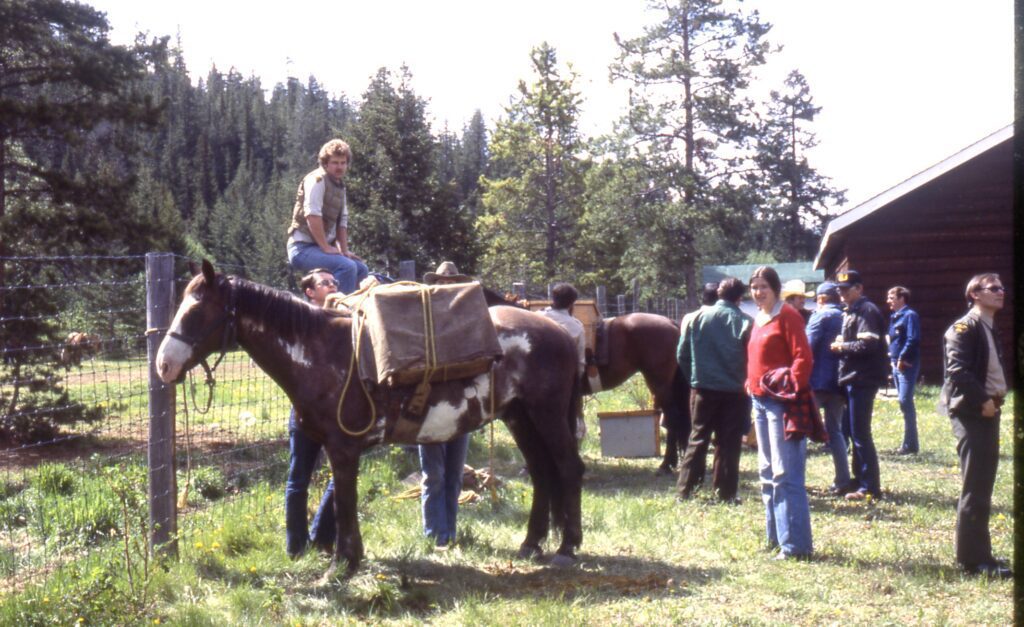
Dave throwing the Diamond Hitch. Photo contributed by T. Damm.
The next year they tried to reintroduce Wood Bison to the north end of Jasper, in Willow Creek. So I worked on that project with Tom Davidson. And the previous winter Denny had hauled a bunch of hay into Willow Creek. Then in the spring, Matt Burstrom and Indian Trail Crew built a big corral out of green lodgepole to hold them. In June, Alpine Helicopters flew them in from Rock Lake and we had 29 buffalo in there. So, Tom and I took turns feeding them for six weeks, and then at the end of July we dropped the gate and let them out. We knew it wasn’t the best way to do it. The bison might not settle there, no home range, and that’s exactly what happened. They tore around Willow Creek and Snake Indian Valley for about a week, going to treeline on both sides of the valley, tearing up the country. Then one day, we had six of them radio collared, and one day there was no signal, they were off. So, I followed them, and they weren’t hard to follow. They left a swath about 30 feet wide with broken timbers and trees and twigs. I followed them up to a little creek, Malloch Creek, and the cabin called Little Heaven. I got there about 6 in the evening, and listened for them and heard a very, very faint signal up the valley. So, I looked with binoculars, and about seven miles in a straight line in the alpine, there they were, right up above tree-line. So, I let the office know at radio call, that I’d be up early going after then. So, I left early in the morning, rode for half a day up there, and when I got there they were gone. So I looked over the bank, and they’d gone down a shale slope, across the backside of a mountain, across the Wild Hay River, and were on the plateau on the far side of the Wild Hay and in the Wilmore Wilderness now. So now they’re outside of Jasper National Park. So back to the cabin and again that evening I called out and I said, “Well, they’re gone. The experiment is over I guess.” They said, “You’d better come to town”. So I went to town and continued to monitor them for the next ten days. And in ten days they went from there all the way to Grande Prairie. I followed them every day with an airplane we’d hired, with telemetry to keep tabs on them. Anyways, they crossed seven major rivers to get to Grande Prairie and didn’t lose a single calf. They stopped at the first barbed wire fence they hit. I guess they thought this is like Elk Island. There’s a fence and a dirt road. There was a big canola field and hunkered down in that for a few days. Then we moved to Grande Prairie, I went with Norm Woody and stayed there with Parks people. Elk Island came out, Canadian Wildlife Service who were in charge of the whole project, they were running it, they came out, and Alberta Fish and Wildlife people. And then after a few days the novelty of the fact that the Buffalo had shown up wore off and farmers were really starting to get grumpy. Your Buffalo just trampled my oat field. So something had to be done quickly. CWS (Canadian Wildlife Service) came up with a plan to get them, tranquilize them individually and get them out of there. That didn’t work at all, it just didn’t work. It was dangerous, and a couple of buffalo were lost because of it.
